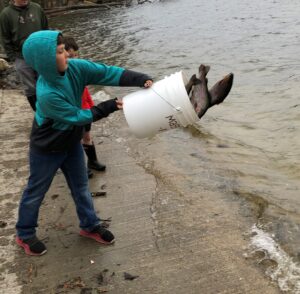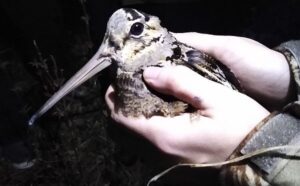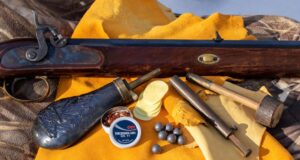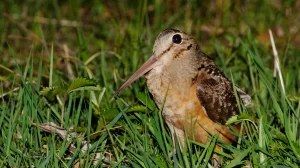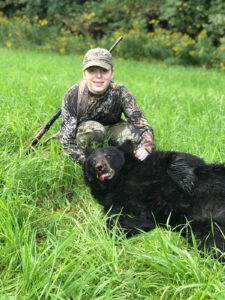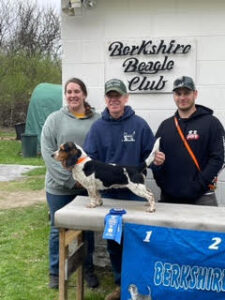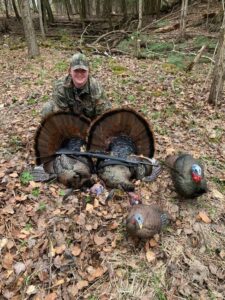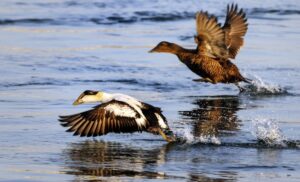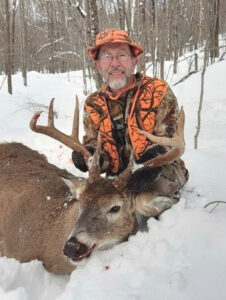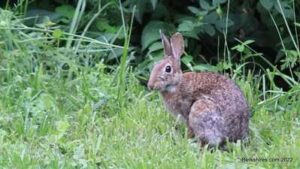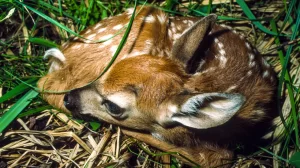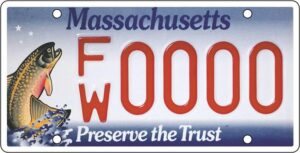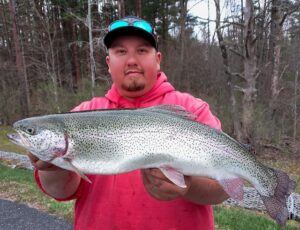A public hearing will be held on Wednesday, April 17 at 2:30 pm., at MassWildlife’s Field Headquarters, 1 Rabbit Hill Road in Westborough, MA. The hearing will establish rules and regulations relative to the 2024–2025 migratory game bird hunting seasons.
Due to the migratory game bird season filing requirements of the U.S. Fish and Wildlife Service, the Fisheries and Wildlife Board must vote to finalize and approve the 2024–2025 migratory bird seasons at the close of the hearing. Therefore, there will be no written comment period after this public hearing. Written comments may be submitted prior to the hearing via email to susan.sacco@mass.gov, Subject: Fisheries and Wildlife Board, or by mail to the Fisheries and Wildlife Board, MassWildlife Field Headquarters, 1 Rabbit Hill Road, Westborough, MA 01581. Written public comments will be accepted until Tuesday, April 16, 2024, 4 p.m.
Interested persons can review the proposed changes and provide written comments prior to the hearing and oral comments during the public-comment portion of the hearing. Here is a summary of the proposed changes:
- Woodcock Season: October 3 – November 30
- Youth Waterfowl Hunts: September 21 and October 5
- Veteran’s Waterfowl Hunts: September 21 and October 5
- Early Goose Season (statewide): September 2 – September 21
- Regular Goose Season
- Berkshire Zone: October 14 – November 16 *
- Central Zone: October 12 – November 30 and December 17 – January 4
- Coastal Zone: October 12 – October 19 and November 26 – January 25
- Late Goose Season
- Berkshire Zone: December 18 – February 15 *
- Central Zone: January 16 – February 15
- North Coastal Zone: January 27 – February 15
- Duck Season
- Berkshire Zone: October 14 – November 30 and December 16 – January 4 *
- Central Zone: October 12 – November 30 and December 17 – January 4
- Coastal Zone: October 12 – October 19 and November 26 – January 25
- Falconry Season: October 19 – February 19
Most of the date changes are just by one or two days, however, I wish to point out the following changes:
*The regular goose season for the Berkshire Zone last year ran from October 10 to November 25; then from December 11 to December 14. Then the Berkshire late goose season ran from January 1 through February 15, 2025. The new proposed dates are from October 14 to November 16 and the late season will run from December 18 through February 15, 2025.
*The Berkshire Duck hunting season last year ran from October 11 to November 25 and December 12 to January 6. The new proposed season will run from October 14 to November 30 (which is the Saturday after Thanksgiving) and then from December 16 to January 4, 2025.
Local trout stockings
The following local waters were scheduled to be stocked last week by MassWildlife: Ashfield Pond in Ashfield, Chickley River in Charlemont and Hawley, Farmington River in Otis, Sandisfield and Tolland; Green River South in Alford, Egremont and Great Barrington; Hoosic River North in Clarksburg and North Adams, Hudson Brook in Clarksburg, North Pond in Florida, Norwich Pond in Huntington, Plunkett Reservoir in Hinsdale, the Williams River in Great Barrington, Pontoosuc Lake and Richmond Pond.
Due to the nasty weather last week, the schedule could have changed. The web site at https://www.mass.gov/info-details/trout-stocking-report will contain the most accurate info:
Spring break is nearing, help stock the trout
The public is invited to help MassWildlife stock trout during school vacation week. Meet MassWildlife fisheries staff, view trout up close, and learn about places to fish near you. Join them on Wednesday, April 17 at 12:30 pm at Onota Lake Burbank Park on Lakeway Drive in Pittsfield.
A few trout are placed in empty 5-gallon pails and the tots run with them to the lake front and heave the fish out into the water. According to MA DFW Western District Supervisor Andrew Madden, we needn’t worry about hurting the trout for the sudden splash into the water does them good. They found, over many years of stocking, that the trout respond better when they are stimulated by a toss into the water. This triggers them to begin swimming right away and speeds up adjustments to any differences in water temperature or flow between the truck environment and the pond or river.
“For the children’s event the fish do great, even though the handling may not always be perfect. These events also provide an opportunity to see and handle fish that many would never experience otherwise. There is no substitute for real life experience to inspire future anglers and conservationists” said Madden.
This is quite an enjoyable event, so parents, grandparents be sure to bring your cameras.
Kids Fishing Derbies beginning at the Hatchery
The 2024 kids fishing derbies are starting up at the Berkshire National Fish Hatchery. Put on by the Friends of the Berkshire National Fish Hatchery, they will run the second Saturday of each month beginning in April and running through September. The first derby will be next Saturday, April 13 at the Hatchery’s Derby Pond. It will start at 9:00 and run to 10:30 am. What a great opportunity for kids ages 13 and under to learn how to fish while competing for prizes.
Board member Dean Hutson promises an action-packed day with lots of exciting activities: New derby shirts for the kids, tagged fish in the pond with thrilling prizes and new merchandise available for sale. No child goes away empty handed.
But wait, there’s more. The Friends of the Berkshire National Fish Hatchery are thrilled to reintroduce Fly Casting on Saturday April 20, following its Fly Tying class. Hutson encourages you to, “Dive into the art of fly tying at 10:00 am, and then cast your creations into Derby Pond around 11:30 am! It’s a double-header you won’t want to miss!”
Don’t forget to bring eye protection (sunglasses or safety glasses) for a safe and enjoyable casting experience.
Email them at info@hatcheryfriends.org beforehand, so they can prepare for your presence, specifying if you’re joining the fly tying class, fly casting session, or both.
Timberdoodles!
A Senecan Indian myth says God made the woodcock (aka timberdoodle) from the leftover parts of other birds. Large eyes are located along the sides of the bird’s head, allowing it to see in all directions, including directly behind. A long, thin bill that averages nearly three inches in length permits woodcock to probe in soft earth for worms, slugs and other invertebrates. Nostrils lie high against the skull so the woodcock can feed and breathe at the same time. Its ears are located beneath the eyes. Woodcock stand about eight inches tall, appear to bob when they walk, and weigh about a half-pound each.
On Thursday, April 11, from 5:00 to 6:00 pm, you are invited to join a Berkshire Natural Resources Council (BNRC) hosted online event with Kayleigh Filkins to learn about Timberdoodle ecology and fun facts as well as a scientific roundup from the Eastern Woodcock Migration Research Cooperative. Kayleigh is a graduate student at SUNY Brockport doing her master’s work on American woodcock habitat selection during the breeding season in New York.
The Zoom link will be emailed to RVSPs on the day of the event. The event will be recorded and shared with RSVPs and on BNRC’s YouTube channel. For questions contact Mariah at mfogg@bnrc.org.
Beagle Club Field Trials
On the April 20 – 21 weekend the Berkshire Beagle Club on Sleepy Hollow Road in Richmond, MA is having its Small Pack Option (SPO) Licensed spring field trials. Some of the best beagles in the northeast will compete and the best dogs are awarded ribbons for excelling in their natural tracking ability, high desire, quick thinking, and speed and endurance while following the scents of snowshoe hares and/or cottontail bunnies. All dogs are AKC registered. .For beagle lovers, there’s no finer sound than that of a beagle singing its heart out while following the scent of a bunny.
Males will run on Saturday, April 20 and the females on April 21, starting at 8:00 am. They will be judged in the following categories: 13” and 15” males and 13” and 15” females.
The club welcomes folks to come and just listen to the dogs and observe the judges.
There will be breakfast and lunch available on both days and probably a 50/50 raffle.
Questions: Chris Wilser (845)489-6554 or Jefferey St. John (413) 441-0744.
Tales with Rex
On Thursday evening, April 11 at 6:30 pm you are invited to join Rex Channel for a night of an unforgettable “eating , drinking & fishing” trip he recently took to Chile, Argentina & Tierra del Fuego. Entitled “tales from South America with Rex, it is full of photos and tales and, of course, the people he met along the way.
It will be held at the Berkshires Hills Country Club, 500 Benedict Road, Pittsfield.
Rex is a valued member of the Taconic Chapter of Trout Unlimited

